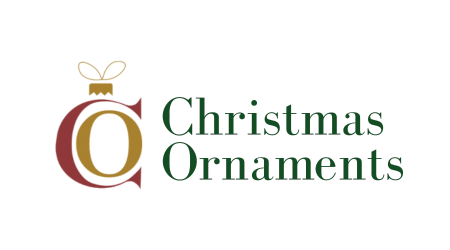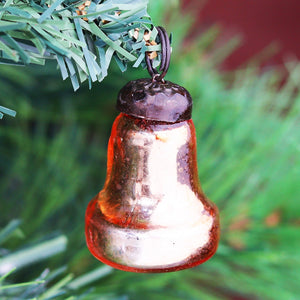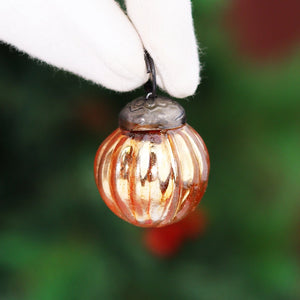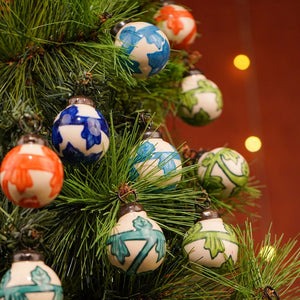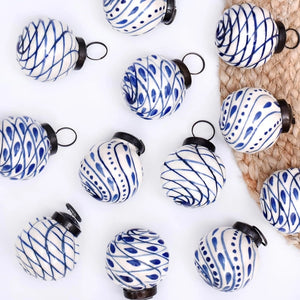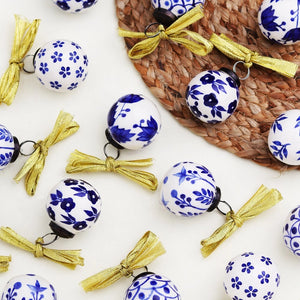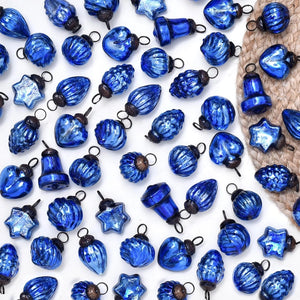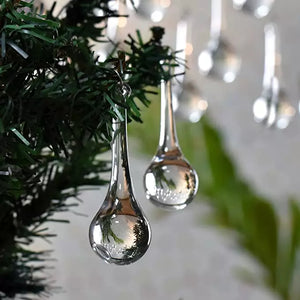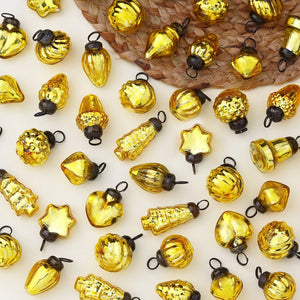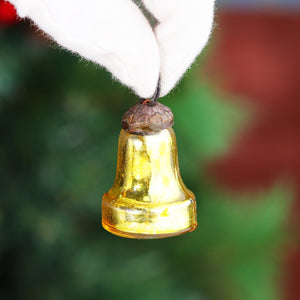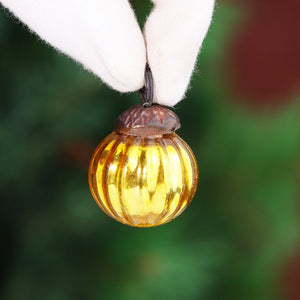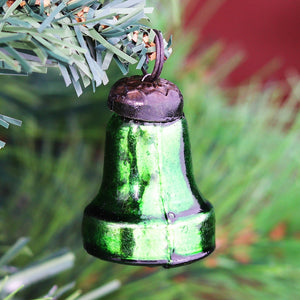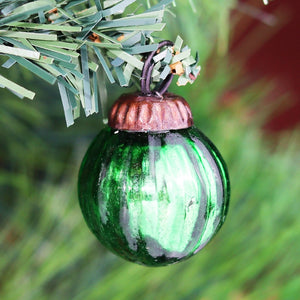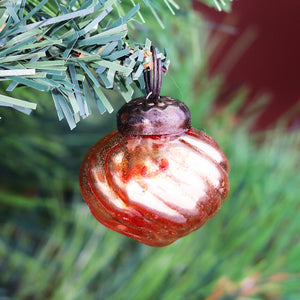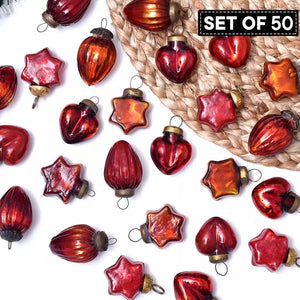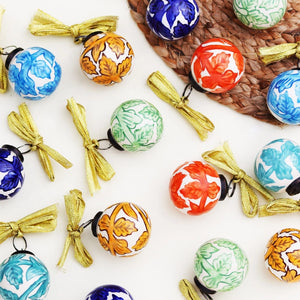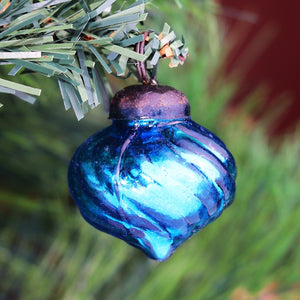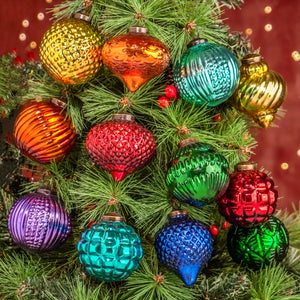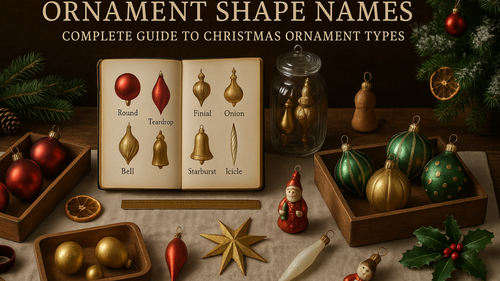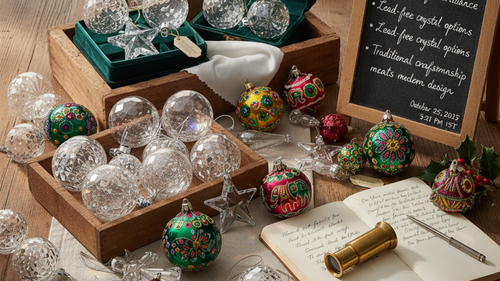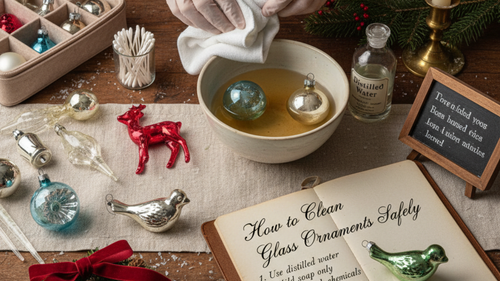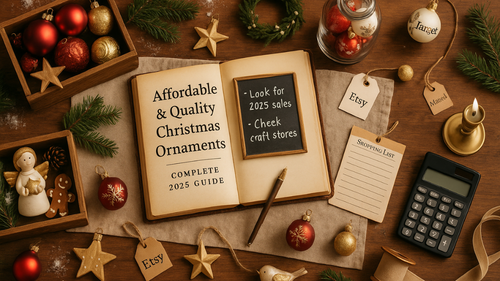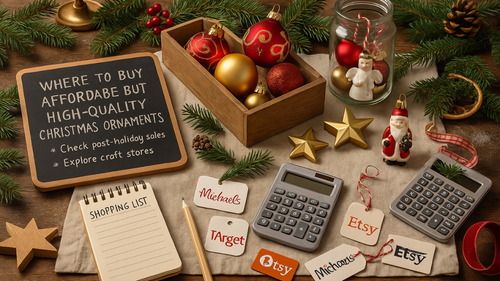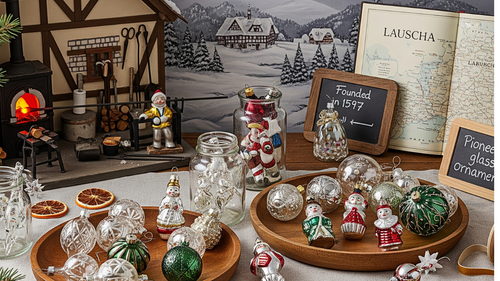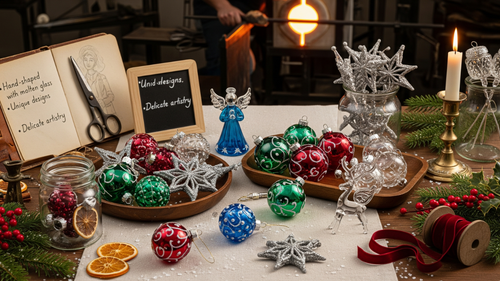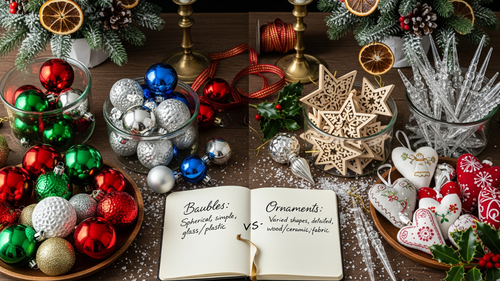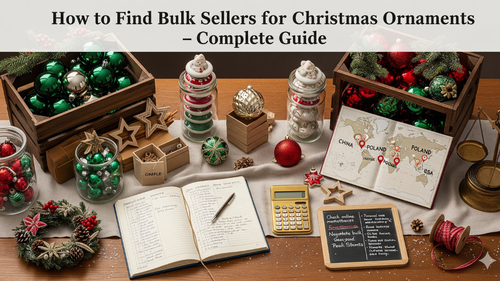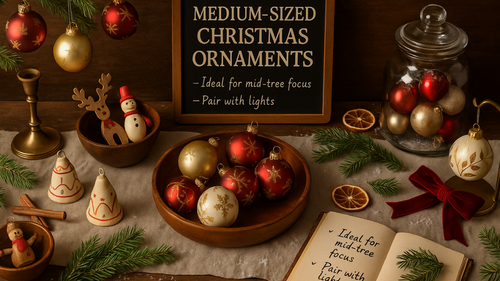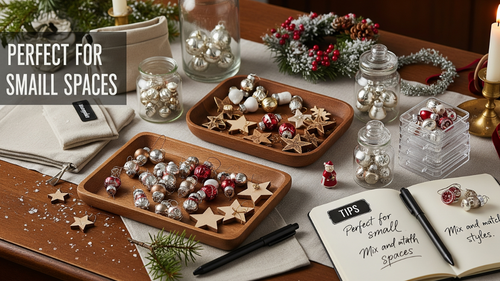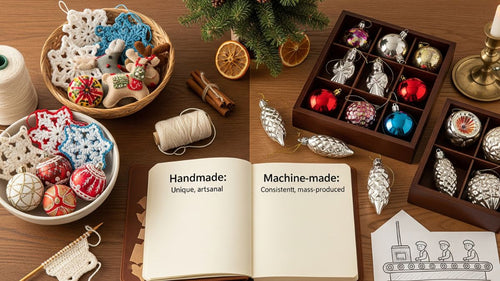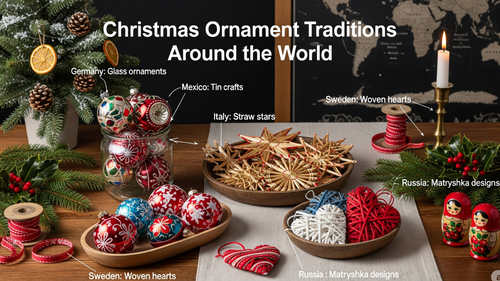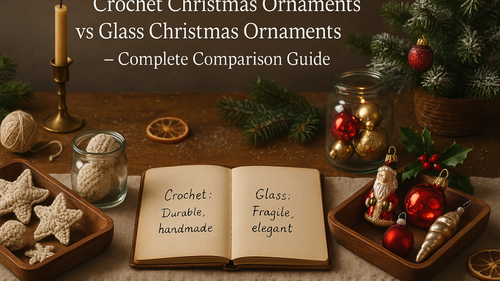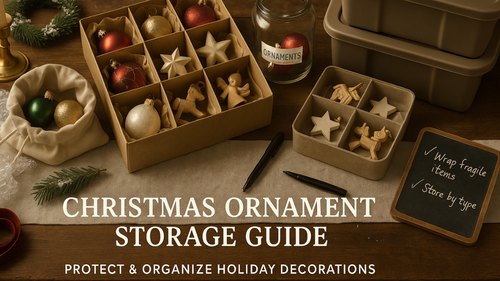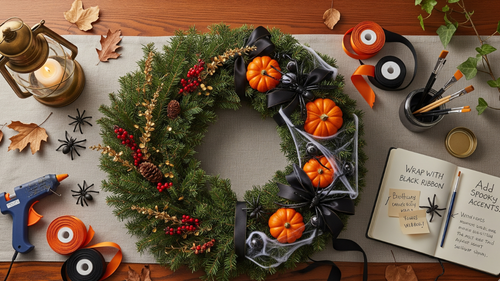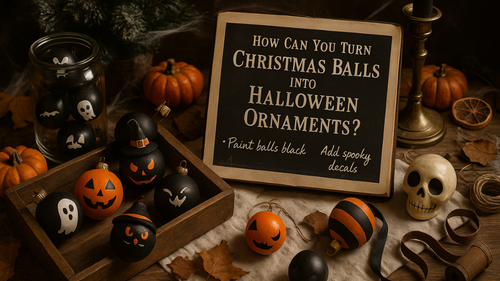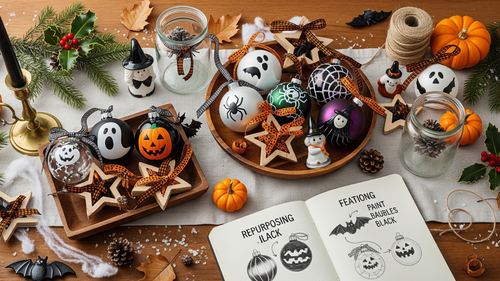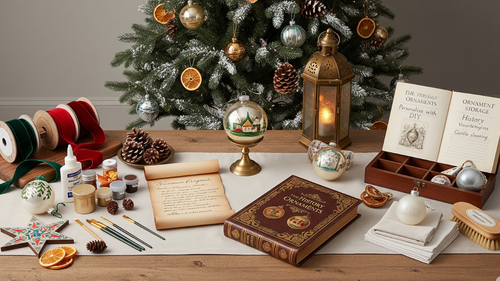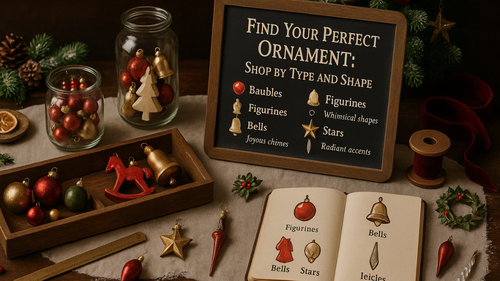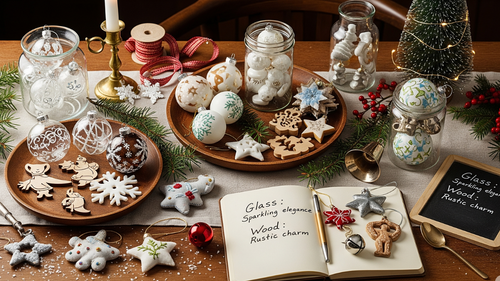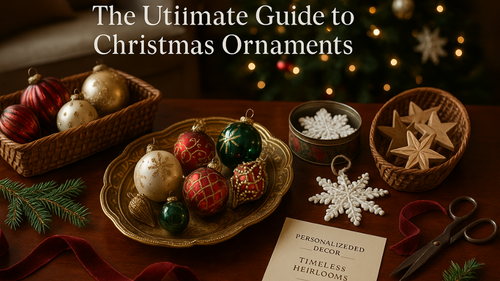The Christmas ornament industry experienced remarkable transformation between 2020 and 2025, with online B2B wholesale ornaments marketplaces reporting double-digit growth in holiday ornament sales since 2021, according to industry estimates. This growth created unprecedented opportunities for small businesses, Etsy sellers, corporate gift suppliers, and e-commerce entrepreneurs to enter the seasonal décor market without massive capital investment.
Understanding the distinctions between private label, white label, and dropshipping business models is no longer optional for entrepreneurs—it's essential for survival in an increasingly competitive marketplace. Each model offers unique advantages depending on your budget, brand vision, and risk tolerance. Whether you're sourcing glass ornaments for a boutique retail line or developing a comprehensive corporate gifting program with OEM ornaments, choosing the right business model determines your profit margins, brand control, and long-term scalability.
This comprehensive guide examines three primary ornament business models, breaking down investment requirements, profit potential, and operational complexity. We'll explore how white-label ornament suppliers like ChristmasOrnamentsOnline.com offer flexible wholesale solutions starting at just $0.25 per unit, enabling businesses of all sizes to compete in the multi-billion-dollar global Christmas ornament market.
Key Takeaways
- Private label offers maximum brand control and profit margins (up to 60%) but requires higher upfront investment ($$$) and MOQs of 300-1000 units
- White label provides a middle ground with faster market entry (1-3 weeks) and moderate investment ($$), ideal for testing product demand
- Dropshipping eliminates inventory risk with minimal investment ($) but yields lower margins (10-25%) and less packaging control
- Holiday ornament sales in online B2B marketplaces increased 28% between 2021-2025, creating significant opportunities for new market entrants
- Successful businesses often employ hybrid models, starting with dropshipping or white label before transitioning to private label for proven bestsellers
- Compliance requirements vary by market, with CPSIA (US), CE (Europe), and ASTM standards governing ornament safety and labeling
- Sustainable manufacturing practices, including recycled glass and biodegradable materials, are becoming competitive advantage in 2025
Understanding the Three Business Models
The ornament supply chain has evolved dramatically over the past five years, offering entrepreneurs multiple entry points depending on their resources and objectives. Each business model represents a different balance between control, investment, and operational complexity.
| Model | Definition | Best For | Investment Level | Time to Market |
|---|---|---|---|---|
| Private Label | Custom products with your brand name and unique design specifications | Established brands seeking exclusivity and differentiation | $$$ (High) | 4-12 weeks |
| White Label | Pre-manufactured ornaments rebranded with your logo or packaging | Retailers testing product lines with moderate budgets | $$ (Medium) | 1-3 weeks |
| Dropshipping | List products online while supplier handles inventory and shipping | New e-commerce startups with limited capital | $ (Low) | Immediate |
Understanding these fundamental differences helps businesses align their ornament sourcing strategy with available capital, brand positioning, and growth objectives. Many successful ornament retailers begin with one model and evolve toward others as their business matures and market knowledge deepens.
Private Label Ornament Manufacturing: Full Brand Control
Private label manufacturing represents the premium tier of ornament sourcing, offering complete creative control over design, materials, and branding. This model suits established businesses ready to invest in product differentiation and long-term brand equity.
Featured Products
The Private Label Process
Private label ornament production involves collaborative design between your brand and the manufacturer. The typical workflow includes:
- Design Consultation: Discuss shape, color palette, finish options, and unique design elements that differentiate your ornaments from competitors
- Material Selection: Choose from glass, metal, resin, wood, ceramic, or mixed materials based on your target market and price point
- Prototype Development: Review physical samples before committing to full production runs
- MOQ Negotiation: Most manufacturers require minimum order quantities ranging from 300 to 1,000 units per design
- Custom Branding: Incorporate your logo through printing, engraving, embossing, or custom packaging design
- Quality Control: Establish inspection protocols and acceptance criteria before shipment
Advantages of Private Label
- Maximum Brand Control: Every design element reflects your brand identity and values
- Premium Profit Margins: Exclusive designs command higher retail prices, with margins reaching 60% for well-positioned brands
- Competitive Moat: Unique products prevent direct price comparison with competitors
- Customer Loyalty: Distinctive designs create memorable brand experiences that drive repeat purchases
- Scalability: Successful designs can expand into complementary product lines
Challenges to Consider
- Capital Requirements: Initial investment ranges from $3,000 to $15,000 depending on MOQ and material choices
- Extended Lead Times: Production timelines span 4-12 weeks, requiring advance planning for seasonal demand
- Inventory Risk: Unsold inventory ties up capital and requires storage solutions
- Design Expertise: Success requires either in-house design capabilities or partnerships with experienced consultants
ChristmasOrnamentsOnline.com specializes in private-label custom ornament production with flexible minimum orders and worldwide delivery, making this premium model accessible to mid-sized businesses. Their team assists with material selection and handmade versus machine-made production decisions based on your brand positioning.
White Label Ornament Programs Explained
White label ornament sourcing occupies the middle ground between dropshipping and private label, offering semi-customized products at moderate investment levels. This model gained significant traction in 2024 as businesses sought faster market entry without sacrificing brand identity.
Featured Products
How White Label Works
Manufacturers produce generic ornament designs without branding, allowing multiple retailers to purchase and rebrand identical base products. The customization typically occurs through:
- Custom hang tags featuring your brand name and logo
- Branded packaging boxes or sleeves
- Printed labels affixed to existing ornaments
- Custom ribbon or cord colors matching your brand palette
Benefits of White Label
- Rapid Market Entry: Products ship within 1-3 weeks since designs already exist
- Lower Risk Profile: Smaller MOQs (often 100-500 units) reduce financial exposure
- Testing Ground: Ideal for validating demand before investing in private label production
- Professional Presentation: High-quality base products with your branding create premium perception
- Flexibility: Easy to add or remove products from your lineup based on sales data
Limitations to Understand
- Design Constraints: Limited to existing manufacturer designs and color options
- Competition: Other retailers may sell identical base products with different branding
- Moderate Differentiation: Branding alone may not create sufficient competitive advantage in crowded markets
Many retailers purchase ready-made ornaments in bulk from ChristmasOrnamentsOnline.com and customize them with branded packaging before resale. This approach works particularly well for boutique shops and seasonal pop-up stores targeting local markets where national competition is less intense.
Understanding different ornament materials becomes crucial in white label sourcing, as material quality directly impacts customer satisfaction and return rates despite your custom branding efforts.
Dropshipping Christmas Ornaments: The Low-Investment Model
Dropshipping revolutionized e-commerce accessibility by eliminating inventory requirements entirely. In this model, you list ornament products in your online store while the supplier handles warehousing, packaging, and direct shipping to your customers.
The Dropshipping Workflow
- Customer places order on your e-commerce website
- You forward order details to your dropshipping supplier
- Supplier packages and ships directly to your customer
- You keep the profit margin between wholesale and retail price
Advantages of Dropshipping
- Zero Inventory Investment: No capital tied up in unsold stock
- Location Independence: Operate your business from anywhere with internet access
- Unlimited Product Range: Test numerous designs without purchase commitment
- Minimal Risk: Discontinue unprofitable products instantly without loss
- Scalability: Add products or sales channels without proportional cost increases
Challenges and Considerations
- Compressed Margins: Profit margins typically range from 10-25%, significantly lower than other models
- Limited Branding: Most dropshippers use generic packaging, reducing brand recognition
- Shipping Delays: International suppliers may require 2-4 weeks for delivery, increasing return risk
- Quality Control Issues: You discover product defects only after customer complaints
- Inventory Visibility: Supplier stockouts can result in cancelled orders and customer dissatisfaction
Maximizing Dropshipping Success
Smart dropshippers prioritize domestic suppliers to reduce shipping times and improve customer experience. When sourcing mini ornaments or medium-sized ornaments for dropshipping, verify the supplier provides real-time inventory updates and reliable order tracking.
ChristmasOrnamentsOnline.com offers bulk-ready SKUs with detailed product specifications and professional photography, making it easier for dropshippers to create compelling product listings without handling physical inventory.
What Are the Actual Profit Margins for Each Model?
Understanding profit economics helps entrepreneurs make informed decisions about which business model aligns with their financial goals. Based on 2024-2025 market data, here's a realistic breakdown of ornament business economics:
Private Label Profit Structure
| Cost Element | Amount |
|---|---|
| Manufacturing Cost (per unit) | $2.00 - $8.00 |
| Custom Packaging | $0.50 - $1.50 |
| Shipping to Your Warehouse | $0.25 - $0.75 |
| Total Cost | $2.75 - $10.25 |
| Typical Retail Price | $15.00 - $40.00 |
| Gross Margin | 45% - 60% |
White Label Profit Structure
| Cost Element | Amount |
|---|---|
| Wholesale Cost (per unit) | $0.75 - $2.00 |
| Custom Tags/Labels | $0.15 - $0.35 |
| Shipping to Your Location | $0.20 - $0.50 |
| Total Cost | $1.10 - $2.85 |
| Typical Retail Price | $8.00 - $15.00 |
| Gross Margin | 35% - 45% |
Dropshipping Profit Structure
| Cost Element | Amount |
|---|---|
| Dropship Wholesale Price | $3.00 - $6.00 |
| Direct Shipping (included) | $0.00 |
| Total Cost | $3.00 - $6.00 |
| Typical Retail Price | $10.00 - $20.00 |
| Gross Margin | 10% - 25% |
These figures exclude additional operational costs like marketing, platform fees (Etsy charges 6.5% transaction fees plus payment processing), website hosting, and customer service. Successful businesses factor these expenses when calculating true profitability.
Retailers exploring affordable but high-quality ornament sources discover that material choice significantly impacts both cost and perceived value, affecting sustainable profit margins.
Hybrid Business Models: Combining Strategies
The most successful ornament businesses rarely commit exclusively to one model. Instead, they strategically blend approaches based on product performance, seasonal demand, and capital availability.
Common Hybrid Strategies
Strategy 1: Test-and-Scale Approach
- Start with white label or dropshipping to identify bestsellers
- Transition top-performing items to private label for higher margins
- Continue dropshipping experimental products with uncertain demand
Strategy 2: Tiered Product Lines
- Private label for signature collections that define your brand
- White label for seasonal variety and trend-responsive items
- Dropshipping for complementary products outside your core expertise
Strategy 3: Seasonal Adaptation
- Private label for core Christmas ornament lines
- Dropshipping for Halloween ornament adaptations and other seasonal crossover products
- White label for last-minute inventory gaps during peak season
Real-World Case Study
A boutique ornament retailer launched in 2022 using dropshipping exclusively, investing $500 in website development and marketing. After tracking sales data for one season, they identified three bestselling designs accounting for 60% of revenue. In 2023, they invested $5,000 in white label versions of those bestsellers with custom packaging, doubling their margins on those specific items while continuing to dropship experimental designs. By 2024, their top seller became a fully private label line of handblown glass ornaments, generating 70% gross margins and establishing them as a premium brand.
This progression from dropshipping to white label to private label represents a common evolution for businesses that prioritize data-driven decision-making over emotional attachment to specific sourcing models.
How Do You Choose the Right Model for Your Business?
Selecting the optimal ornament business model requires honest assessment of your resources, objectives, and constraints. Use this decision framework to guide your choice:
Decision Tree
If You Have Limited Capital (Under $1,000)
Choose Dropshipping
- Eliminates inventory risk
- Allows market testing with minimal investment
- Provides time to learn customer preferences before larger commitments
If You Have Moderate Capital ($1,000 - $5,000)
Choose White Label
- Balances brand control with manageable risk
- Faster path to branded products than private label
- Sufficient differentiation for local and niche markets
If You Have Substantial Capital (Over $5,000) and Established Brand
Choose Private Label
- Maximizes long-term brand equity and customer loyalty
- Justifies premium pricing through unique design
- Creates sustainable competitive advantages
Critical Questions to Ask
- What's your risk tolerance? Conservative entrepreneurs prefer dropshipping; risk-tolerant visionaries gravitate toward private label
- Do you have unique design ideas? Original concepts justify private label investment; if not, white label or dropshipping makes more sense
- What's your target market? Premium customers expect unique products (private label); budget shoppers prioritize price over exclusivity (dropshipping/white label)
- How much time can you invest? Private label requires significant management attention; dropshipping is nearly passive
- What are your growth objectives? Building a brand asset favors private label; supplementing income favors dropshipping
Retailers exploring different ornament sizes or color collections often find that certain categories perform better with specific business models based on competition levels and customer expectations.
Vetting Reliable Ornament Manufacturers
Your manufacturer relationship determines product quality, delivery reliability, and ultimately customer satisfaction. Thorough vetting prevents costly mistakes and protects your brand reputation.
Essential Verification Steps
1. Production Capacity Assessment
- Request factory certifications (ISO 9001, BSCI, SA8000)
- Order samples before committing to large purchases
- Verify they can meet your timeline and volume requirements
- Ask for references from current clients in similar size brackets
2. Material and Safety Credentials
- Confirm compliance with target market regulations (CPSIA, CE, ASTM)
- Request material safety data sheets (MSDS)
- Verify lead-free certification for glass and metal products
- Check for FSC certification if using wood components
3. Trade Reputation Research
- Review ratings on Alibaba, ThomasNet, or Faire
- Search for complaints on Better Business Bureau
- Join industry Facebook groups to ask for manufacturer recommendations
- Verify business registration and legal standing in their country
4. Communication and Transparency
- Assess response times to inquiries (should be under 24 hours)
- Request virtual factory tours via video call
- Evaluate English proficiency if language barriers exist
- Test their willingness to accommodate customization requests
Red Flags to Avoid
- Requiring full payment before production starts
- Refusing to provide samples or factory certifications
- Prices significantly below market average (suggests quality compromises)
- Vague answers about production timelines or MOQ flexibility
- No established process for handling defects or returns
ChristmasOrnamentsOnline.com provides transparent pricing, sample kits, and low MOQs specifically designed for first-time buyers. Their team offers guidance on material selection and can connect you with their production partners, including heritage craftspeople from Lauscha, Germany, the birthplace of glass Christmas ornaments.
Legal and Compliance Requirements
Navigating ornament import regulations and safety standards protects your business from costly recalls, fines, and legal liability. Requirements vary significantly by target market.
United States Compliance
CPSIA (Consumer Product Safety Improvement Act)
- Mandatory testing for lead and phthalates in children's products
- Required for ornaments marketed to children under 12
- Certificate of compliance must accompany shipments
ASTM Standards
- ASTM F963 covers toy safety for ornaments sold as children's items
- Tests mechanical hazards, flammability, and toxic elements
European Union Compliance
CE Marking
- Required for ornaments sold in EU markets
- Confirms conformity with health, safety, and environmental protection standards
- Manufacturer or importer must maintain technical documentation
REACH Regulation
- Restricts hazardous chemicals in consumer products
- Particularly relevant for painted or treated ornaments
Import and Export Considerations
Customs Documentation
- HS Code 9505.10 covers Christmas ornaments for tariff classification
- Commercial invoices must accurately describe materials and origin
- Anti-dumping duties may apply to imports from certain countries
Country of Origin Labeling
- US requires clear country of origin marking on products and packaging
- Penalties for mislabeling can reach $10,000 per violation
Intellectual Property Protection
- Trademark Registration: Protect your brand name and logo in target markets (costs $250-$750 per class in US)
- Design Patents: Consider for truly unique ornament designs (filing costs $2,000-$5,000)
- Copyright: Automatically protects original artwork and designs upon creation
Insurance Coverage
Essential policies for ornament businesses include:
- Product Liability Insurance ($500-$2,000 annually)
- Cargo Insurance for international shipments (1-3% of shipment value)
- General Business Liability ($400-$1,500 annually)
Working with established suppliers like ChristmasOrnamentsOnline.com simplifies compliance since they provide necessary certifications and documentation with bulk orders, reducing your administrative burden.
Sustainability and Future Trends in Ornament Manufacturing
Environmental consciousness reshaped ornament manufacturing priorities in 2024-2025, with consumers increasingly demanding sustainable products. This trend creates both challenges and opportunities for ornament businesses.
Eco-Friendly Manufacturing Innovations
Recycled and Reclaimed Materials
- Recycled glass ornaments reduce energy consumption by 30% compared to virgin glass
- Reclaimed wood from sustainable forests carries FSC certification
- Post-consumer recycled metals eliminate mining environmental impact
Biodegradable Components
- Plant-based glitter replaces microplastic alternatives
- Compostable packaging materials from cornstarch or mushroom mycelium
- Natural fiber cords (cotton, hemp, jute) replace synthetic ribbons
Local and Regional Production
- Nearshoring reduces carbon footprint from international shipping
- Regional producers in Poland, Germany, and India gain market share
- Made-in-USA programs command 15-25% price premiums
Technology Transforming Ornament Design
3D Printing and Rapid Prototyping
- Custom ornament prototypes produced in 24-48 hours
- Design iterations cost 90% less than traditional tooling
- Small batch production becomes economically viable
- Complex geometric designs previously impossible with traditional methods
AI-Powered Design Tools
- Generative design software creates thousands of variations from basic parameters
- Trend prediction algorithms identify emerging color and style preferences
- Virtual reality showrooms enable B2B buyers to visualize products before ordering
Market Trends Shaping 2025 and Beyond
Corporate Gifting Expansion
B2B ornament sales for corporate gifts grew 42% from 2023 to 2024, driven by companies seeking meaningful employee appreciation and client gifts. This segment values:
- Bulk customization with company logos
- Premium materials and presentation
- Sustainability credentials for brand alignment
- Unique designs that reflect company values
Personalization at Scale
- Digital printing enables individual name customization on production runs
- QR codes embedded in ornaments link to digital memories or messages
- Photo ornaments using UV printing technology
Year-Round Ornament Markets
Smart retailers discovered opportunities beyond Christmas, repurposing ornaments for Halloween, weddings, birthdays, and home décor, extending the traditional seasonal business model into year-round revenue streams.
Consumer Preferences Evolving
2024 consumer surveys revealed shifting priorities:
- 68% willing to pay 10-20% premium for verified sustainable products
- 54% prefer supporting small businesses over mass retailers
- 73% value product story and maker background
- 61% research product origins before purchasing gifts
These preferences favor private label businesses that can communicate authentic brand stories and demonstrate environmental responsibility, creating competitive advantages beyond price competition.
Frequently Asked Questions
What's the minimum order for private label ornaments?
Minimum order quantities for private label ornaments typically range from 300 to 1,000 units per design, depending on the manufacturer and material complexity. Glass ornaments often require higher MOQs (500-1,000) due to tooling costs, while simpler materials like wood or resin may start at 300 units. Some manufacturers like ChristmasOrnamentsOnline.com offer flexible minimums for first-time buyers, allowing you to test private label production without massive capital commitment. Always request MOQ information during initial consultations, as numbers vary significantly between suppliers.
Can I start a dropshipping ornament business with no inventory?
Yes, dropshipping eliminates inventory requirements entirely. You create an online store listing ornament products, and when customers place orders, you forward those orders to your dropshipping supplier who ships directly to customers. Initial investment focuses on website development ($100-$500 for platforms like Shopify), product photography or supplier images, and marketing. However, expect lower profit margins (10-25%) compared to inventory-based models, and prioritize domestic dropship partners to minimize shipping delays that negatively impact customer satisfaction.
How do I brand white-label ornaments effectively?
Effective white-label branding combines multiple touchpoints: custom hang tags with your logo and brand story, branded packaging boxes or sleeves, tissue paper or filler in brand colors, printed care instruction cards, and ribbon or cord in your signature colors. The key is creating a cohesive unboxing experience that makes customers forget the base product came from a generic manufacturer. Invest 15-25% of your wholesale cost in quality packaging materials, as presentation significantly influences perceived value and justifies higher retail prices.
Which business model offers the best profit margins for small retailers?
Private label delivers the highest profit margins (45-60%) but requires substantial upfront investment and inventory risk. White label provides moderate margins (35-45%) with balanced risk and investment. Dropshipping offers the lowest margins (10-25%) but eliminates inventory risk entirely. For small retailers, white label often represents the optimal balance, providing branded products at manageable investment levels while maintaining margins sufficient to fund growth. Consider starting with white label for proven bestsellers while dropshipping experimental products.
How can I find reliable Christmas ornament manufacturers?
Start by researching suppliers on verified B2B platforms like Alibaba, Faire, or ThomasNet. Always order samples before committing to large purchases, verify factory certifications (ISO 9001, BSCI), and check reviews from existing clients. Request virtual factory tours via video call to assess production capabilities. Domestic manufacturers often provide better communication and faster shipping but may cost 20-40% more than international options. ChristmasOrnamentsOnline.com offers transparent pricing and sample kits designed specifically for small businesses vetting suppliers. Research bulk seller options thoroughly before making financial commitments.
Do I need special licenses to import ornaments?
Most countries don't require special licenses for importing ornaments as a business, but you need a business license or LLC registration and potentially a reseller's permit or sales tax certificate depending on your location. You must comply with product safety standards (CPSIA in US, CE marking in EU) and properly classify imports using HS code 9505.10 for customs. Working with established importers or freight forwarders simplifies documentation requirements, especially for first-time importers unfamiliar with customs procedures.
What's the difference between handmade and machine-made ornaments for business purposes?
Handmade ornaments command premium prices (often 2-3x machine-made equivalents) and appeal to customers valuing craftsmanship and uniqueness. However, they require longer production times, have less consistency between units, and face higher labor costs. Machine-made ornaments offer consistency, scalability, and lower unit costs, making them ideal for volume retailers. Many successful businesses offer both: machine-made for entry-level price points and handmade for premium collections.
How do seasonal businesses manage cash flow with inventory models?
Seasonal ornament businesses face concentrated revenue periods (October-December) requiring careful cash flow management. Successful strategies include: securing a business line of credit for inventory purchases in summer, negotiating 30-60 day payment terms with suppliers, pre-selling to corporate clients to fund inventory, offering early-bird discounts to accelerate cash collection, and maintaining 3-6 months operating expenses in reserves. White label and dropshipping models reduce cash flow stress compared to private label's larger upfront inventory investments.
Conclusion
The ornament industry's transformation between 2020 and 2025 democratized access to global supply chains, enabling entrepreneurs at every investment level to build profitable businesses. Understanding the distinctions between private label, white label, and dropshipping models empowers you to choose the approach that aligns with your capital availability, brand vision, and growth objectives.
Private label manufacturing offers maximum brand control and premium profit margins up to 60%, making it ideal for established businesses with $5,000+ budgets ready to invest in distinctive products. White label programs provide the middle ground with faster market entry, moderate investment requirements, and sufficient customization for local market differentiation. Dropshipping eliminates inventory risk entirely, enabling new entrepreneurs to test ornament business concepts with minimal capital while accepting compressed margins of 10-25%.
The most successful ornament businesses rarely commit to a single model. Instead, they strategically blend approaches based on product performance data, using dropshipping to test demand, white label to build branded collections, and private label for proven bestsellers worthy of exclusive investment. This hybrid strategy minimizes risk while maximizing profit potential across different product tiers.
As sustainability concerns reshape consumer preferences in 2025, ornament businesses incorporating recycled materials, biodegradable packaging, and transparent supply chains gain competitive advantages beyond price. Corporate gifting programs, personalization technology, and year-round ornament applications create revenue opportunities extending well beyond traditional seasonal windows.
Whether you're launching a new ornament line or scaling an existing business, affordable and customizable ornament sourcing is now accessible globally. Manufacturers like ChristmasOrnamentsOnline.com offer flexible solutions starting at $0.25 per unit, accommodating businesses from startup dropshippers to established brands seeking comprehensive ornament collections.
The question isn't whether you can build a profitable ornament business—it's which model best positions you for sustainable growth in your target market. Start by honestly assessing your resources, clarify your brand vision, and choose the business model that transforms your ornament business goals into reality.
Ready to explore flexible private label, white label, or wholesale ornament options? Visit ChristmasOrnamentsOnline.com's collections or contact us about bulk orders to discuss your specific business needs and discover how we can support your ornament business journey.
